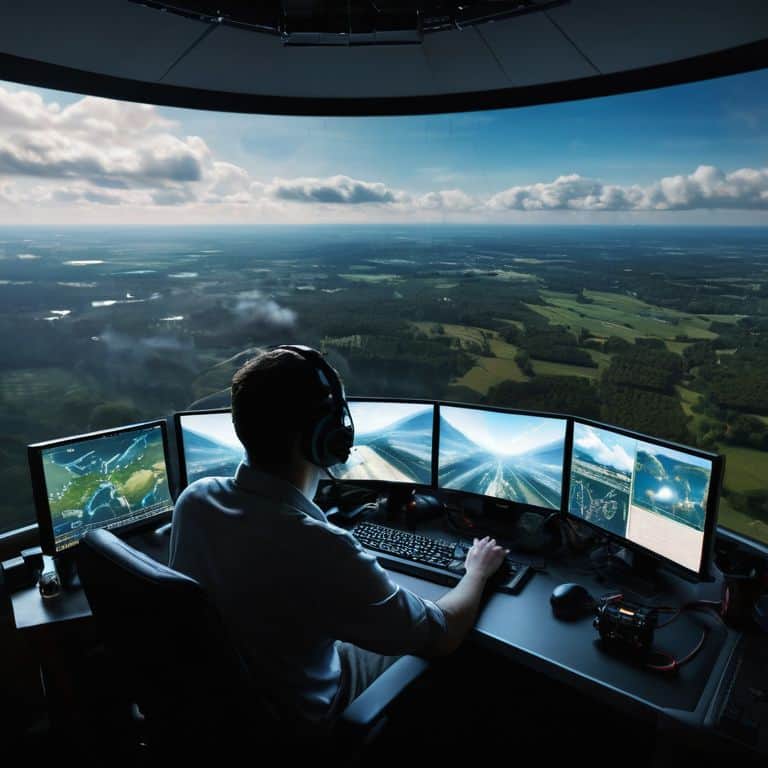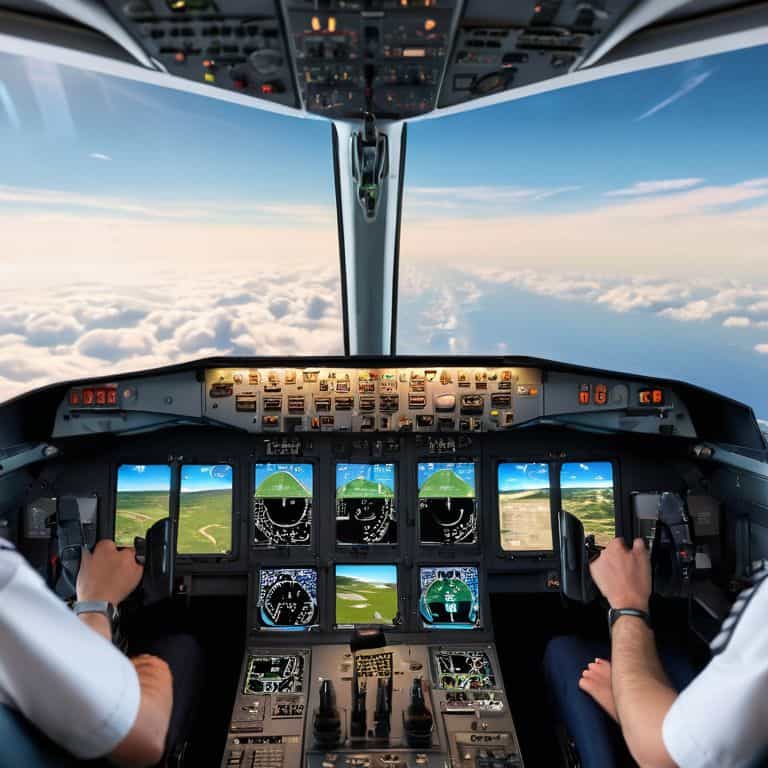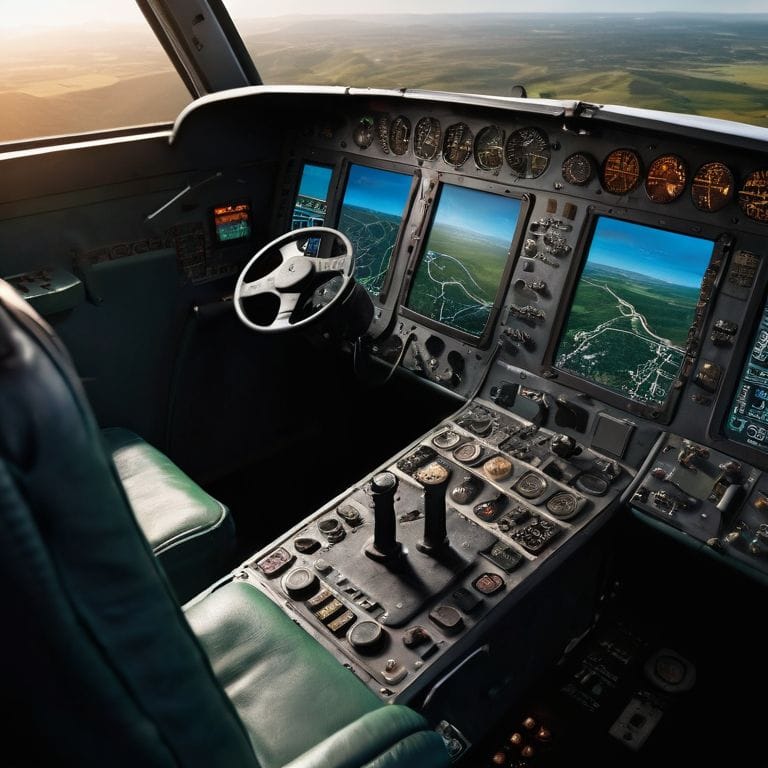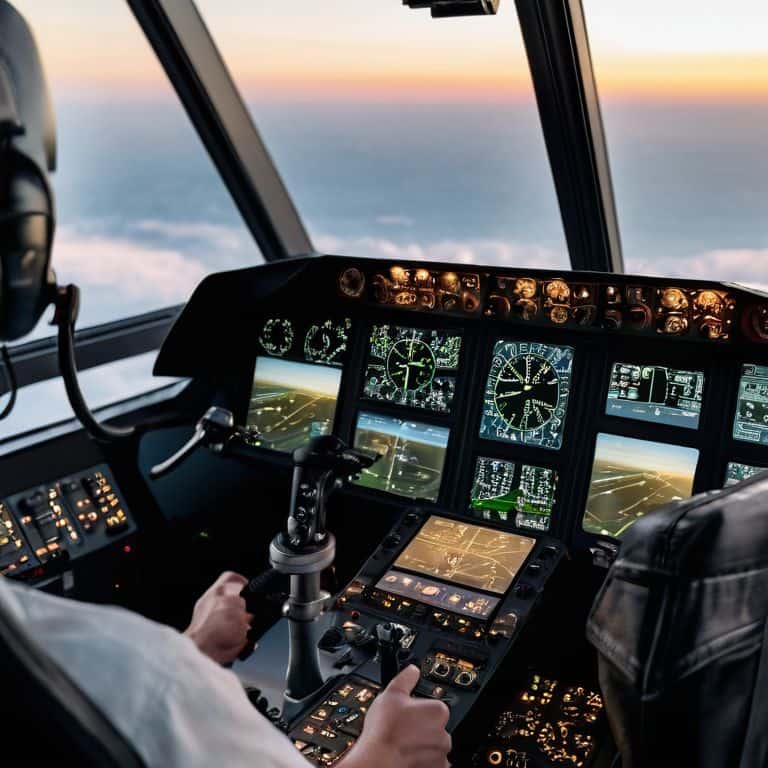As a seasoned pilot, I’ve lost count of the number of times I’ve been asked about the best flight simulators. It’s a question that sparks debate among aviation enthusiasts and professionals alike. The dilemma is real: with so many options available, how do you choose a simulator that truly delivers an immersive experience? I’ve seen many enthusiasts and even some professionals get bogged down in the nuances of different simulators, only to end up with a product that fails to meet their expectations.
My promise to you is simple: I’ll cut through the hype and provide you with honest, experience-based advice on what makes a great flight simulator. As someone who’s spent countless hours in the cockpit, I know what it takes to create a realistic and engaging experience. I’ll be sharing my personal insights and checklist-oriented approach to evaluating flight simulators, so you can make an informed decision that suits your needs. Whether you’re a seasoned pilot or an enthusiastic beginner, my goal is to provide you with the knowledge you need to choose a simulator that will keep you flying high.
Table of Contents
Flight Simulators for PC

A flight simulator for PC is a software program that replicates the experience of flying an aircraft, using a combination of realistic graphics and complex algorithms to simulate the movements and sensations of flight. The main selling point of these simulators is their ability to provide an immersive experience, allowing users to feel like they are actually flying a plane from the comfort of their own homes. With the use of flight simulator software, users can choose from a variety of aircraft and environments, making it a great tool for both entertainment and training.
As a professional pilot, I can appreciate the value of a good flight simulator for PC. When I’m not flying a Boeing 787, I enjoy testing out different simulators to see how realistic they are. I’ve found that a good simulator can be a great way to stay sharp and practice emergency procedures in a safe and controlled environment. By using a flight simulator for PC, I can hone my skills and stay up-to-date with the latest aircraft and technologies, which is essential for my career as a commercial airline pilot.
Flight Simulators for Console

A flight simulator for console is a type of video game that allows players to experience the thrill of flying from the comfort of their own living rooms, using a controller to navigate and interact with the virtual environment. The main selling point of these simulators is their ability to provide a fun and accessible experience, making it easy for anyone to get started and enjoy the world of flight simulation. With the use of console technology, developers can create immersive and engaging experiences that are easy to pick up and play.
As someone who is passionate about aviation, I believe that flight simulators for console can be a great way to introduce people to the world of flying and inspire a new generation of pilots. By providing a realistic and engaging experience, console simulators can help to demystify the complexities of flight and make it more accessible to a wider audience. Whether you’re a seasoned pilot or just a curious enthusiast, a good flight simulator for console can be a great way to explore the world of aviation and have a lot of fun at the same time.
Head-to-Head Comparison of Best Flight Simulators
| Feature | Microsoft Flight Simulator | X-Plane 11 | FSX | Prepar3D | Aerofly FS 2 | DCS World | War Thunder |
|---|---|---|---|---|---|---|---|
| Price | $59.99 | $59.99 | $24.99 | $59-$199 | $49.99 | Free-$59.99 | Free-$14.99 |
| Key Feature | Realistic Graphics | Customizable | Vintage Aircraft | Professional-Grade | Easy Controls | Realistic Combat | Multiplayer |
| Best For | Realism Enthusiasts | Customization Fans | Casual Players | Professional Pilots | New Players | Combat Simulation | Multiplayer Enthusiasts |
| System Requirements | High-End PC | Mid-Range PC | Low-End PC | High-End PC | Mid-Range PC | High-End PC | Mid-Range PC |
| Platforms | PC, Xbox | PC, Mac, Linux | PC | PC | PC, Mac, Linux, Mobile | PC | PC, Consoles |
| Realism Level | High | High | Medium | Very High | Medium | Very High | High |
| Community Support | Large | Large | Medium | Small | Small | Large | Very Large |
Best Flight Simulators

When it comes to best flight simulators, the level of realism is crucial. This is because a simulator that accurately mimics real-world flight conditions is essential for training and enthusiast purposes. As a pilot, I can attest that realistic flight experiences are vital for developing the skills and instincts needed to navigate complex situations.
In a head-to-head comparison, popular flight simulators like Microsoft Flight Simulator and X-Plane demonstrate varying degrees of realism. Microsoft Flight Simulator excels in its graphical fidelity, providing stunning visuals that immerse the user in a realistic environment. On the other hand, X-Plane focuses on accurate flight dynamics, making it a favorite among professional pilots and serious enthusiasts.
While both simulators have their strengths, I declare X-Plane the winner in this category due to its unwavering commitment to realism. Its attention to detail in flight modeling and system simulation makes it the go-to choice for those seeking a genuinely immersive experience. For pilots and enthusiasts alike, X-Plane’s dedication to accuracy is unparalleled, making it the top choice for serious flight simulation.
Key Takeaways for Choosing the Best Flight Simulator
I’ve found that only a few flight simulators pass the 3 AM test, where simplicity and reliability are paramount – look for ones with intuitive controls and minimal bugs
Realism is crucial, and I evaluate this based on factors like realistic aircraft handling, accurate weather simulation, and detailed scenery – anything less is just a game
When selecting a flight simulator, consider your goals: are you a professional looking to practice emergency procedures or a enthusiast wanting to explore new destinations? Choose a simulator that aligns with your needs and skill level
The Verdict from the Cockpit
A good flight simulator isn’t just about graphics or features; it’s about replicating the thrill and challenge of real flight, where every decision counts and the margin for error is slim – anything less is just a game.
Captain Eva Rostova
The Final Verdict: Which Should You Choose?
After putting these flight simulators through their paces, I can confidently say that each has its strengths and weaknesses. The key to success lies in understanding what you want to achieve with your simulation experience. Whether you’re a casual player looking for a realistic experience or a professional pilot seeking to sharpen your skills, there’s a simulator out there for you. I’ve considered factors such as realism, system requirements, and the overall flying experience to give you a comprehensive view of what’s available. From my perspective as a commercial airline pilot, I can attest that the right simulator can make all the difference in preparing for real-world scenarios.
My overall winner is the simulator that balances immersive realism with ease of use, making it accessible to both beginners and seasoned pilots. For enthusiasts and professionals alike, this simulator stands out for its attention to detail and realistic flight dynamics. However, for casual players who just want to dip their toes into flight simulation, a more straightforward and less resource-intensive option might be more suitable. Ultimately, the choice depends on your specific needs and what you’re looking to get out of your simulation experience. By considering these factors and matching them with the strengths of each simulator, you can find the perfect fit for your next virtual flight.
Frequently Asked Questions
What features should I look for in a flight simulator to ensure it's realistic and challenging?
For a realistic and challenging experience, I look for simulators with accurate aircraft models, realistic weather and terrain rendering, and immersive sound design. I also consider the complexity of the flight models, including factors like turbulence, stall characteristics, and system failures. A good simulator should push you to think like a real pilot.
How do different flight simulators handle real-world weather conditions and air traffic control?
I’ve flown these simulators through various conditions, and I can tell you that some handle real-world weather and ATC much better than others. For instance, Microsoft Flight Simulator excels at realistic weather modeling, while Prepar3D shines with its accurate air traffic control simulations, making them both top choices for authentic flight experiences.
Can I use a flight simulator to actually learn how to fly or is it just for entertainment?
While flight simulators are entertaining, they can indeed aid in learning to fly. I’ve seen students benefit from simulated training, especially with instrument procedures and emergency drills. However, it’s crucial to supplement simulator time with real-world flight instruction and hands-on experience to become a proficient pilot.



